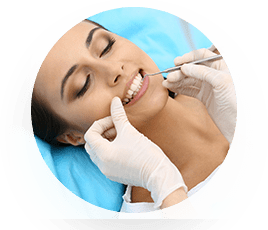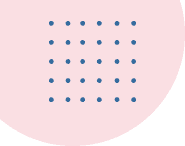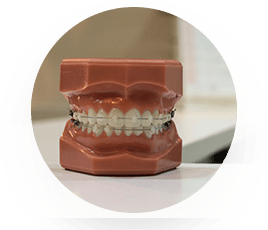From quadrants to tooth numbers, dentistry has its own mysterious language.
Industry-specific language helps dentists do their job. But when it comes to your teeth, you want to understand what's going on — especially when it's time to pay for your dental work.
Canada's universal health care system doesn't cover most dental procedures. Canadians pay for dentistry out of pocket or through private insurance.
But the truth is that it's hard to find a Canadian plan that covers all dental costs. That means that after a trip to the dentist, you'll be paying for at least part of your dental bill out of your own pocket. And that means that you'll want to know exactly what the dentist is charging you for.
If you want to learn to speak the lingo of Canadian dental procedure codes, this guide is for you. Keep reading to learn what Canadian dental codes mean and how they differ among provinces. Most importantly, we'll explain why they matter for your dental insurance claims, and how you can avoid overpaying for dental fees.
What Are Canadian Dental Procedure Codes?
The Canadian dental procedure codes are a system of categorizing dental services. Different countries use different systems to standardize their dental procedures. The Canadian dental industry uses this unique system to keep its services consistent across the country.
The Canadian Dental Association (CDA) develops and regulates this system. Every dental service has a unique 5-digit number. Canadian dentists use these codes to record their services, communicate within the industry, and bill clients.
This coding system gives structure to the Canadian dental industry. Without a standardized system, Canadian dentists wouldn't know exactly how to define or charge the work they do. It allows Canadian dentists to standardize their work.
It also allows governing bodies to regulate how dentistry is performed, and how much dentists charge for each service. Finally, it lets insurance companies decide how much of the cost of dental procedures they will cover.
The Canadian Dental Procedure codes are recognized across Canada. Each province uses slightly different codes, though they are similar enough for Canadian dentists and insurance companies to use consistently. However, Quebec uses a significantly different coding system.
Canadian Dental Code Categories
Let's take a look at the nitty-gritty of dental procedure codes.
There are over 1,300 unique codes (plus, the Canadian Dental Association introduces new codes all the time as new dental procedures emerge). There are also specialized sets of codes for dental hygienists, as well as dental specialists. That's a lot of numbers.
But don't worry: There's no need to get familiar with every single code. The Canadian Dental Association breaks down dental services into 10 basic categories. Each 5-digit code fits into one of these categories.
Diagnostic Services
Codes 00001-09999 refer to all dental services that diagnose diseases and problems. Dental exams start from 01011, which refers to dental exams for children up to 3 years old. They increase in price and complexity to in-depth exams for maxillofacial and dental problems.
This range also includes tests, X-rays and other photography, professional consultations, and making models of teeth such as dental casts.
Preventative Services
Codes 10000-19999 include services that prevent dental disease and maintain oral health. Since these tend to be the most common reasons Canadians visit the dentist, you'll see this range of codes most frequently.
In this range, you'll see regular services such as cleaning, fluoride treatment, polishing, and scaling. Less common services like oral appliances and nighttime retainers fall into this category as well.
Restorative Services
Codes 20000-29999 include services that restore your teeth after damage. They may include tooth crowns (whether applying them or removing them to re-apply), and tooth fillings.
Tooth fillings have many different components, from the pin that holds the filling to the tooth's root to the visible core and crown. Each of these services has a unique code and can be billed separately.
Endodontic Services
Codes 30000-39999 relate to procedures that treat the live part of your tooth (including the nerve and pulp) rather than the bony enamel.
Root canals (removing the soft tissue and nerve from inside a tooth when it becomes infected) are the most well-known procedure from this service range. Children who still have their primary teeth can also suffer from pulp infection. In their case, they will have a pulpectomy (removing the soft tissue without the nerve) to keep the infection from spreading.
Periodontal Services
Codes 40000-49999 deal with corrective procedures to the gum and periodontium.
In periodontal disease, bacteria infect your gums and cause them to pull away from your teeth. To correct this problem, you may need periodontal services like in-depth teeth scaling and root planing.
Removable Prosthetics
Codes 50000-59999 account for insertion, removal, maintenance, and repair of removable dentures.
Dentures can be costly. Remember that these codes only account for the service costs for denture maintenance. The actual costs of dental prosthetics, such as partial or full dentures, aren't included.
Fixed Prosthodontic Services
Codes 60000-69999 include non-removable dentures and other permanent appliances. Services such as inserting, maintaining, and removing semi-permanent permanent retainers fall into this category.
Oral and Maxillofacial Surgical Services
Codes 7000-79999 refer to reconstructive surgeries of the mouth and jaw. These may include inserting dental implants into the bone, reconstructive jaw surgery, and dental extractions (pulling a tooth). It can also include soft tissue surgeries such as biopsies and surgical gum reconstruction.
Orthodontic Services
Codes 80000-89999 include dental services that adjust tooth spacing without surgery, especially inserting, adjusting, and removing braces. This includes traditional wire braces, as well as newer appliance types such as aligners and spacers.
Adjunctive General Services
Finally, codes 90000-99999 refer to miscellaneous services not covered by other categories. They can range as widely as court appearances to botox administration, as well as general anesthesia for dental surgery, tooth whitening, and professional consulting.
Single and Multiple Units
The last digit in a code often refers to how many units of that service you received. For instance, the dental code 11111 refers to 1 unit of scaling (scraping plaque buildup from your teeth).
A "unit" of scaling means the amount of scaling that the dental hygienist did in 15 minutes. If it took 30 minutes to scale your teeth, you would be charged for 2 units of scaling instead. The code for 2 units of scaling is 11112; the code for 3 units is 11113, and so on.
Why Are Dental Codes Important?
To your dentist, Canadian dental procedure codes are professionally useful. They standardize their work and make it possible to bill efficiently.
But to you, they're important because they determine how much you pay for your dental work.
As Canadians know, there are some excellent full-coverage insurance plans out there that will cover your dental costs. However, insurance usually covers most, not all, dental expenses. That means even if you have insurance, you'll likely pay some dental costs out of pocket.
But how much will you pay? Canadian dental procedure codes have the answer.
Dental Codes and Insurance
When you look at the invoice your dentist's office issues, you'll see the services you received along with their 5-digit dental procedure code.
For instance, you'll see something like:
- 11111: 1 unit of scaling
- 02112: 2 radiographic images
They'll be listed along with the amount that the dentist is charging you for each service.
Many insurance plans cover a fixed amount for each standardized service. Most commonly, they cover the amount that your province suggests that those standardized services are worth. That amount is determined by your province's dental fee guide.
Provincial Fee Guides
Every Canadian province and territory has its own Dental Association, and each provincial association issues a fee guide for the dentists who work in that province. This is a guide that states how much a dental procedure is worth under normal conditions, and sets the norm for the prices that all provincial dentists use.
By listing every standardized dental procedure by its code number, the fee guide suggests how much each dentist should charge for those procedures.
Dental Fees Vary
While your province's dental association issues a suggested fee amount for every service in the Canadian dental procedure code, the final amount that you pay for a service is up to your dentist.
Dental practices are private businesses. That means they are free to charge as much or as little for their services as they choose.
For example, if your provincial fee guide suggests charging a $45 fee for a service, your dentist may charge $40, $50, or whatever they choose.
But your insurance provider usually only covers the suggested fee for a dental procedure. In the example above, your insurance may cover the suggested fee of $45. If your dentist charges $50, you will end up paying the difference out of pocket.
Of course, dental procedures can be much more costly than this example. Braces, prostheses, and surgeries can cost hundreds or even thousands of dollars, and the difference between the suggested cost and your dentist's actual cost can be proportionally larger. That means you can end up paying a surprising amount for your dental work.
Do You Have a Dental Insurance Plan?
Get quotes in minutes and save on the best insurance policies.
Get QuotesHow Can I Avoid Overpaying?
Being able to interpret your dental codes helps you understand the world of dental lingo. But with so many Canadians avoiding costly dental work, can it help you avoid overpaying for dental procedures?
The Canadian Dental Association doesn't publish its updated national fee guide to the general public. Since the fee guideline is costly to write and maintain, dentists must purchase access to it to cover its production costs. Some provinces make their fee guide publically available, but they caution that it is so technical that it can be hard for those outside the industry to read.
We don't know exactly what fees the Canadian Dental Association suggests to its members. But that doesn't mean you can't find lower prices for coded dental procedures.
Choose Your Dentist
If your insurance only covers the suggested fee, you don't necessarily have to pay out of pocket. Instead, compare the prices of different dentists in your area.
You might not be able to know exactly which dentists are sticking to the suggested dental fees. However, you may still find a range of prices.
Some dentists choose to keep their fees at or under the suggested cost to stay competitive in the dental market. Others charge more than the suggested cost, whether to offset their own fees or for other reasons. While you won't know exactly which fees are within the suggested range — the range that your insurance is more likely to cover — you can still find the lowest cost and avoid higher out-of-pocket costs.
Choose Your Insurance
While 32% of Canadians still don't have dental insurance, there's no doubt that in Canada, having dental insurance coverage is a must. But there are tons of options to choose from, and the plan you pick will significantly impact what you finally end up paying.
If you're worried about paying unexpected out-of-pocket costs at the dentist, look for a plan that has high monthly coverage. A bargain plan costs less upfront, but may not fully cover your costs. Especially if you expect to have dental expenses in the future, such as aligners, choose a plan that will defray your costs.
Is Dental Insurance Worth it After Retirement?
Find out why it is still important to have and learn how to save on your dental plan.
View ArticleCanadian Dental Procedure Codes, Explained
Canadian dental procedure codes are the basis for dental costs and coverage. They're the key to understanding your dental expenses and insurance. With this guide, you'll be able to understand your dental procedure codes and take ownership of your dental costs.
With so many dental options, choosing an insurance plan can be overwhelming. Insurdinary compares the most comprehensive health and dental insurance quotes so that you can find the Canadian dental plan that meets your needs.
Best of all, Insurdinary finds the best monthly rates in Canada, so you know that you're not overpaying for your insurance. If you're looking for affordable dental insurance in Canada, get started with Insurdinary today.








